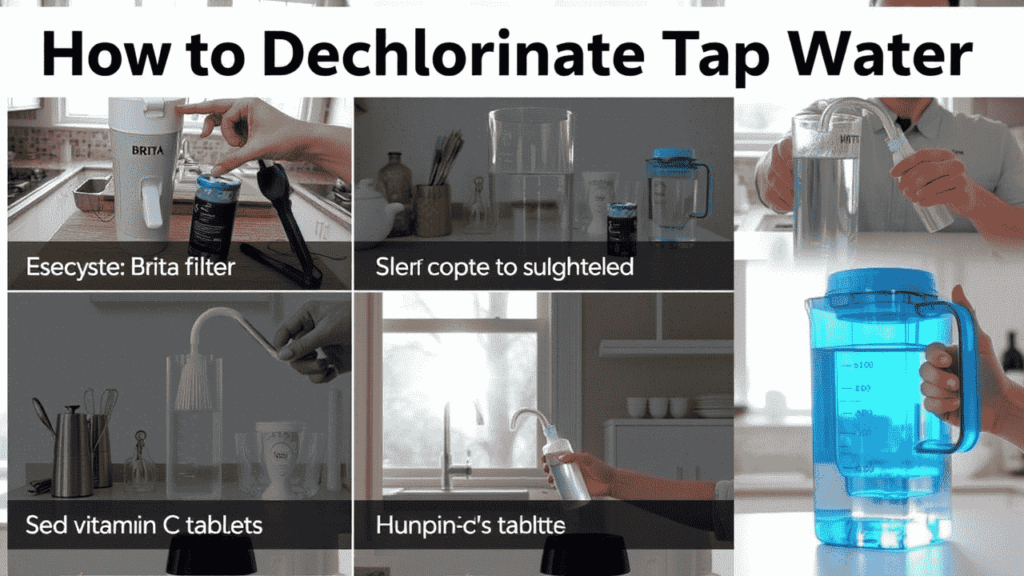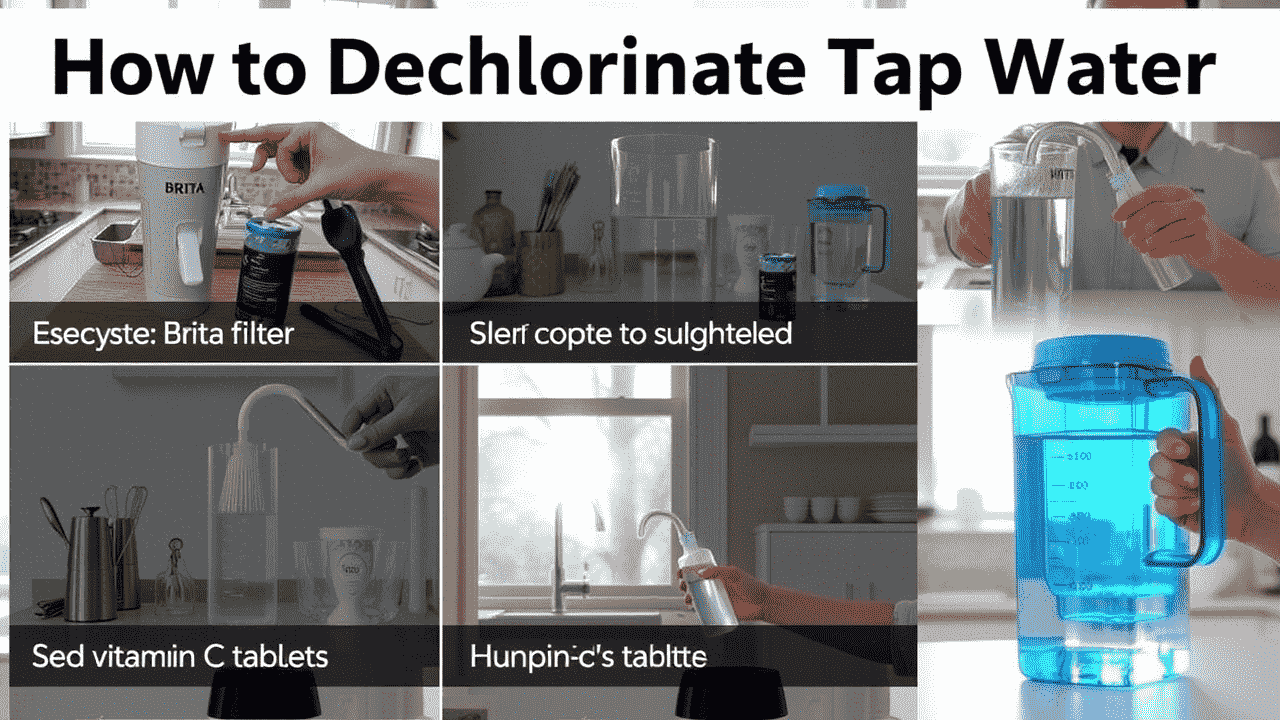If you drink tap water, use it to water plants, or need it for aquariums, you’ve likely wondered how to dechlorinate tap water. Chlorine is commonly added to municipal water supplies to kill harmful bacteria and keep water safe, but it isn’t ideal for every use. Some people find its taste unpleasant, it can harm aquatic life, and it may negatively impact plant health. The good news? There are plenty of simple ways to remove chlorine from water, ensuring it’s clean, safe, and better suited to your needs.
This guide will explore how to dechlorinate tap water using various effective methods and provide tips for ensuring high-quality, chlorine-free water.
Why Should You Dechlorinate Tap Water?
Before diving into methods, it’s worth understanding why dechlorinating water is so widely recommended. Chlorine is added to water supplies to disinfect and kill bacteria, but its presence isn’t always beneficial in areas outside this primary purpose. Here’s why removing chlorine from tap water is important:
- Improve Taste and Odor: Chlorine gives tap water a distinct chemical taste and smell, which many find unpleasant for drinking or cooking.
- Protect Fish and Aquatic Life: Chlorine is toxic to fish and aquatic plants, so removing it is vital for aquariums and ponds.
- Encourage Plant Growth: Chlorine in tap water can kill soil microbes essential for healthy plant development. Chlorine-free water keeps plants thriving.
- Prioritize Health: While chlorine is generally safe for human consumption in small amounts, some people prefer avoiding it due to long-term health considerations.

Effective Methods for How to Dechlorinate Tap Water
With chlorine-free water becoming increasingly desirable, here are the best ways to achieve it.
1. Boiling Water
One of the easiest methods to dechlorinate tap water is by boiling it. Heat removes chlorine by converting it into gas, which then escapes into the air.
Steps:
- Fill a pot with tap water.
- Boil the water for 15–20 minutes.
- Allow the water to cool before use.
Whether you need dechlorinated water for drinking, cooking, or aquariums, boiling is simple and cost-effective.
2. Using Activated Carbon Filters
Activated carbon filters are among the fastest and most efficient ways to dechlorinate tap water. These filters trap chlorine particles as the water flows through them.
How to Use:
- Attach an activated carbon filter to your faucet or use a filter pitcher.
- For large-scale needs, consider installing a whole-house filter system.
This method is perfect for those who regularly need chlorine-free water for multiple uses, from drinking to household activities.
3. Vitamin C (Ascorbic Acid)
Vitamin C is an excellent natural alternative for neutralizing chlorine. This method is quick, safe, and widely loved by aquarium owners and gardeners.
How It Works:
- Dissolve a small amount of Vitamin C powder (ascorbic acid or sodium ascorbate) into the tap water.
- Stir and wait a few minutes for the chlorine to neutralize.
Vitamin C also eliminates chloramine, a compound that’s often paired with chlorine in water treatment processes.
4. Allowing Water to Sit
One of the simplest ways to dechlorinate tap water is by letting it sit in an open container. This method works because chlorine naturally evaporates.
Steps:
- Fill an uncovered container with tap water.
- Leave it in a well-ventilated space for 24–48 hours.
For faster results, you can aerate the water using an aquarium bubbler. While this option is straightforward, it’s best suited for tasks like watering plants rather than immediate needs.
5. Using Chemical Dechlorinators
If you’re looking for quick and guaranteed results, chemical dechlorinators are a proven option. These are often used for aquariums and come in liquid or tablet form.
How to Apply:
- Add the recommended dose of the dechlorinator to your water, following the product’s instructions.
Although effective, this method is primarily ideal for aquariums and should be used carefully when handling drinking water.
6. Reverse Osmosis Systems
Reverse osmosis (RO) systems are a higher-cost, advanced purification method designed to dechlorinate tap water and remove other impurities like heavy metals and bacteria.
Benefits:
- Provides high-purity, chlorine-free water.
- Covers all household water needs when used as a whole-house system.
Despite the higher upfront cost and maintenance, RO systems are an excellent investment for those serious about water quality.
Tips for Dechlorinating Tap Water
- Test the Water: Use a home water test kit to check the chlorine levels in your tap water before and after treatment. This ensures your chosen method is effective.
- Match the Method to the Use: For drinking water, consider filters or boiling. For aquariums, opt for Vitamin C or chemical dechlorinators.
- Maintain Equipment: Clean and replace filters or cartridges in purification systems regularly to ensure optimal performance.
- Store Water Properly: Keep dechlorinated water in clean, airtight containers to prevent contamination.
The Bottom Line
Knowing how to dechlorinate tap water is key to improving water quality for many purposes, from everyday drinking to specialized needs like aquariums or plant care. Whether you choose to boil your water, use an activated carbon filter, or rely on Vitamin C, there’s a method suitable for every household. By removing chlorine, you’ll enjoy cleaner, better-tasting water that’s safer for your plants, pets, and personal use. Give these methods a try and discover the difference dechlorinated water can make!
Why should I dechlorinate tap water?
Dechlorinating tap water improves its taste and odor, makes it safe for aquariums, enhances plant growth, and can reduce potential long-term health risks associated with chlorine.
What is the fastest way to remove chlorine from tap water?
Using activated carbon filters or chemical dechlorinators provides the quickest results. Both methods effectively remove chlorine almost instantly.
How long does it take to dechlorinate water naturally?
If you leave tap water uncovered in a well-ventilated area, chlorine usually evaporates within 24–48 hours. Using an aerator or bubbler can speed up the process.
Does boiling water remove chlorine?
Yes, boiling tap water for 15–20 minutes removes most of the chlorine by turning it into a gas that escapes into the air.
Can I use Vitamin C to dechlorinate water?
Absolutely! Vitamin C (ascorbic acid or sodium ascorbate) effectively neutralizes chlorine and is a trusted method for aquariums, gardening, and other uses.

Anamika is a passionate writer for Eco365Store.com, specializing in topics that inspire a cleaner, greener world. With expertise in home cleaning, recycling, and eco-friendly solutions, she crafts engaging and informative articles that help readers adopt sustainable practices in their daily lives.

